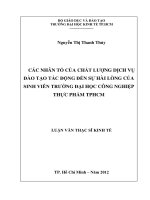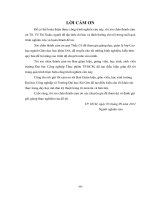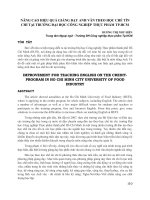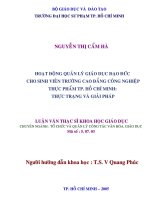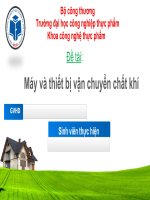- Trang chủ >>
- Đề thi >>
- Đề thi tuyển dụng
Complete grammar program and teach terrific grammar - Trường Đại học Công nghiệp Thực phẩm Tp. Hồ Chí Minh
Bạn đang xem bản rút gọn của tài liệu. Xem và tải ngay bản đầy đủ của tài liệu tại đây (611.14 KB, 20 trang )
<span class='text_page_counter'>(1)</span><div class='page_container' data-page=1></div>
<span class='text_page_counter'>(2)</span><div class='page_container' data-page=2>
Teach
Terrific
</div>
<span class='text_page_counter'>(3)</span><div class='page_container' data-page=3></div>
<span class='text_page_counter'>(4)</span><div class='page_container' data-page=4>
Gary Robert Muschla
New York Chicago San Francisco Lisbon London Madrid Mexico City
Milan New Delhi San Juan Seoul Singapore Sydney Toronto
Teach
Terrific
<b>GRAMMAR</b>
</div>
<span class='text_page_counter'>(5)</span><div class='page_container' data-page=5>
Copyright © 2007 by Gary Robert Muschla. All rights reserved. Manufactured in the United States of America. Except as permitted under the United States Copyright
Act of 1976, no part of this publication may be reproduced or distributed in any form or by any means, or stored in a database or retrieval system, without the prior
written permission of the publisher.
0-07-151059-1
The material in this eBook also appears in the print version of this title: 0-07-147702-0.
All trademarks are trademarks of their respective owners. Rather than put a trademark symbol after every occurrence of a trademarked name, we use names in an
editorial fashion only, and to the benefit of the trademark owner, with no intention of infringement of the trademark. Where such designations appear in this book,
they have been printed with initial caps.
McGraw-Hill eBooks are available at special quantity discounts to use as premiums and sales promotions, or for use in corporate training programs. For more
information, please contact George Hoare, Special Sales, at or (212) 904-4069.
TERMS OF USE
This is a copyrighted work and The McGraw-Hill Companies, Inc. (“McGraw-Hill”) and its licensors reserve all rights in and to the work. Use of this work is
sub-ject to these terms. Except as permitted under the Copyright Act of 1976 and the right to store and retrieve one copy of the work, you may not decompile,
disassem-ble, reverse engineer, reproduce, modify, create derivative works based upon, transmit, distribute, disseminate, sell, publish or sublicense the work or any part of it
without McGraw-Hill’s prior consent. You may use the work for your own noncommercial and personal use; any other use of the work is strictly prohibited. Your right
to use the work may be terminated if you fail to comply with these terms.
THE WORK IS PROVIDED “AS IS.” McGRAW-HILL AND ITS LICENSORS MAKE NO GUARANTEES OR WARRANTIES AS TO THE ACCURACY,
ADEQUACY OR COMPLETENESS OF OR RESULTS TO BE OBTAINED FROM USING THE WORK, INCLUDING ANY INFORMATION THAT CAN BE
ACCESSED THROUGH THE WORK VIA HYPERLINK OR OTHERWISE, AND EXPRESSLY DISCLAIM ANY WARRANTY, EXPRESS OR IMPLIED,
INCLUDING BUT NOT LIMITED TO IMPLIED WARRANTIES OF MERCHANTABILITY OR FITNESS FOR A PARTICULAR PURPOSE. McGraw-Hill and
its licensors do not warrant or guarantee that the functions contained in the work will meet your requirements or that its operation will be uninterrupted or error free.
Neither McGraw-Hill nor its licensors shall be liable to you or anyone else for any inaccuracy, error or omission, regardless of cause, in the work or for any damages
resulting therefrom. McGraw-Hill has no responsibility for the content of any information accessed through the work. Under no circumstances shall McGraw-Hill
and/or its licensors be liable for any indirect, incidental, special, punitive, consequential or similar damages that result from the use of or inability to use the work,
even if any of them has been advised of the possibility of such damages. This limitation of liability shall apply to any claim or cause whatsoever whether such claim
or cause arises in contract, tort or otherwise.
</div>
<span class='text_page_counter'>(6)</span><div class='page_container' data-page=6></div>
<span class='text_page_counter'>(7)</span><div class='page_container' data-page=7></div>
<span class='text_page_counter'>(8)</span><div class='page_container' data-page=8>
vii
Contents
About This Book xiii
How to Use This Book xv
Part 1
Sentences ... 1
<b>Tip Sheet: Kinds and Structures of Sentences</b> 2
1.1 E. B. White (<i>Recognizing Types of Sentences</i>) 3
1.2 Special States (<i>Understanding Sentence Structure, 1</i>) 4
1.3 A Space First (<i>Understanding Sentence Structure, 2</i>) 5
<b>Tip Sheet: Subjects and Predicates</b> 6
1.4 A President’s Ride in an Automobile (<i>Identifying Complete Subjects and </i>
<i>Complete Predicates, 1</i>) 7
1.5 First Settlement (<i>Identifying Complete Subjects and Complete </i>
<i>Predicates, 2</i>) 8
1.6 Hungry Toads (<i>Identifying Simple Subjects, 1</i>) 9
1.7 Above the South Pole (<i>Identifying Simple Subjects, 2</i>) 10
1.8 Native American Explorer (<i>Identifying Simple Predicates, 1</i>) 11
1.9 First Flight (<i>Identifying Simple Predicates, 2</i>) 12
1.10 Two of a Kind (<i>Identifying Simple Subjects and Simple Predicates, 1</i>) 13
1.11 The Biggest Turtle of All (<i>Identifying Simple Subjects and </i>
<i>Simple Predicates, 2</i>) 14
1.12 American Flag Maker (<i>Identifying Compound Subjects</i>) 15
1.13 Center of the Land (<i>Identifying Compound Predicates</i>) 16
1.14 Passing Time (<i>Identifying Compound Subjects and Compound Predicates</i>) 17
<b>Tip Sheet: Fragments and Run-On Sentences</b> 18
1.15 Big Mouth (<i>Recognizing Sentence Fragments</i>) 19
1.16 Outlaw Hero (<i>Recognizing Run-On Sentences</i>) 20
1.17 Famous Woodpecker (<i>Recognizing Sentences, Fragments, and Run-Ons</i>) 21
1.18 Nickname for a President (<i>Review of Sentences, 1</i>) 22
1.19 First Phone Call (<i>Review of Sentences, 2</i>) 23
1.20 Famous Woman Dentist (<i>Review of Sentences, 3</i>) 24
1.21 Cool Creation (<i>Review of Sentences, 4</i>) 25
</div>
<span class='text_page_counter'>(9)</span><div class='page_container' data-page=9>
viii
Co
n
te
n
ts
Part 2 Nouns ... 27
<b>Tip Sheet: Nouns</b> 28
2.1 Frontier Hero (<i>Identifying Nouns, 1</i>) 29
2.2 Snakes (<i>Identifying Nouns, 2</i>) 30
2.3 Surrounded States (<i>Identifying Common and Proper Nouns, 1</i>) 31
2.4 Going West (<i>Identifying Common and Proper Nouns, 2</i>) 32
<b>Tip Sheet: Forming Plural Nouns </b> 33
2.5 Famous Signature (<i>Identifying Plural Nouns, 1</i>) 34
2.6 Up, Up, and Away (<i>Identifying Plural Nouns, 2</i>) 35
<b>Tip Sheet: Nouns with Special Plural Forms</b> 36
2.7 Fast-Food First (<i>Identifying Irregular Plural Nouns</i>) 37
<b>Tip Sheet: Possessive Nouns</b> 38
2.8 Famous Crime Fighter (<i>Understanding Singular and Plural </i>
<i>Possessive Nouns, 1</i>) 39
2.9 Guide to Freedom (<i>Understanding Singular and Plural </i>
<i>Possessive Nouns, 2</i>) 40
2.10 Famous Monument (<i>Understanding Singular and Plural </i>
<i>Possessive Nouns, 3</i>) 41
2.11 Pluto (<i>Review of Nouns, 1</i>) 42
2.12 Sources of Energy (<i>Review of Nouns, 2</i>) 43
2.13 Snowy City (<i>Review of Nouns, 3</i>) 44
2.14 Game for Kids (<i>Review of Nouns, 4</i>) 45
Part 3 Verbs ... 47
<b>Tip Sheet: Two Kinds of Verbs</b> 48
3.1 Author of a Classic Story (<i>Identifying Action Verbs, 1</i>) 49
3.2 Flying While Sleeping (<i>Identifying Action Verbs, 2</i>) 50
3.3 A Philadelphia First (<i>Identifying Action Verbs, 3</i>) 51
3.4 Planets and Stars (<i>Identifying Verb Phrases, 1</i>) 52
3.5 Aiming for the Stars (<i>Identifying Verb Phrases, 2</i>) 53
3.6 Nighttime Animals (<i>Identifying Linking Verbs, 1</i>) 54
3.7 Not an Ordinary Tornado (<i>Identifying Linking Verbs, 2</i>) 55
3.8 Related to Mickey (<i>Identifying Action and Linking Verbs, 1</i>) 56
3.9 Busy Bees (<i>Identifying Action and Linking Verbs, 2</i>) 57
3.10 Hurricanes by Another Name (<i>Identifying Action and Linking Verbs, 3</i>) 58
<b>Tip Sheet: Direct Objects</b> 59
3.11 What’s the Weather? (<i>Identifying Direct Objects, 1</i>) 60
3.12 Walking on a Tightrope (<i>Identifying Direct Objects, 2</i>) 61
<b>Tip Sheet: Nouns and Adjectives That Follow Linking Verbs</b> 62
3.13 Favorite Cookie (<i>Identifying Words After Linking Verbs That Rename or </i>
<i>Describe Subjects</i>) 63
</div>
<span class='text_page_counter'>(10)</span><div class='page_container' data-page=10>
<b>Tip Sheet: Verb Tenses</b> 66
<b>Tip Sheet: Rules for Forming the Tenses of Verbs</b> 67
3.15 Earthquakes (<i>Identifying Verb Tenses, 1</i>) 68
3.16 Food for Plants (<i>Identifying Verb Tenses, 2</i>) 69
3.17 Coral Reef (<i>Identifying Verb Tenses, 3</i>) 70
<b>Tip Sheet: Agreement Between Subjects and Verbs</b> 71
3.18 What a Hoot! (<i>Understanding Subject and Verb Agreement, 1</i>) 72
3.19 Sports Fans (<i>Understanding Subject and Verb Agreement, 2</i>) 73
3.20 E. L. Konigsburg (<i>Understanding Subject and Verb Agreement, 3</i>) 74
<b>Tip Sheet: Regular and Irregular Verbs</b> 75
3.21 Gateway to a New Life (<i>Understanding Irregular Verbs, 1</i>) 76
3.22 Big Ears (<i>Understanding Irregular Verbs, 2</i>) 77
3.23 Men on the Moon (<i>Understanding Irregular Verbs, 3</i>) 78
<b>Tip Sheet: Two Special Verbs: </b><i><b>Be</b></i><b> and </b><i><b>Have</b></i> 79
3.24 Small Dog (<i>Understanding the Forms of </i>Be<i> and </i>Have<i>, 1</i>) 80
3.25 Searching Everywhere (<i>Understanding the Forms of </i>Be
<i>and</i>Have<i>, 2</i>) 81
3.26 Warriors and Explorers (<i>Review of Verbs, 1</i>) 82
3.27 Three Special Sets of Letters (<i>Review of Verbs, 2</i>) 83
3.28 Great Explorer (<i>Review of Verbs, 3</i>) 84
3.29 Step up to the Plate (<i>Review of Verbs, 4</i>) 85
Part 4 Pronouns ... 87
<b>Tip Sheet: Pronouns</b> 88
4.1 Fairy Tale Author (<i>Identifying Pronouns, 1</i>) 89
4.2 Tinkering Around (<i>Identifying Pronouns, 2</i>) 90
4.3 Hot Dogs (<i>Identifying Pronouns, 3</i>) 91
4.4 Flat State (<i>Identifying Pronouns, 4</i>) 92
<b>Tip Sheet: Subject Pronouns</b> 93
4.5 Word Game (<i>Identifying Subject Pronouns</i>) 94
<b>Tip Sheet: Object Pronouns</b> 95
4.6 Moving Along . . . Slowly (<i>Identifying Object Pronouns</i>) 96
<b>Tip Sheet: Two Special Pronouns: </b><i><b>I</b></i><b> and </b><i><b>Me</b></i> 97
4.7 Big Eyes (<i>Identifying Subject and Object Pronouns, 1</i>) 98
4.8 Brothers and Sisters (<i>Identifying Subject and Object Pronouns, 2</i>) 99
4.9 Dr. Seuss (<i>Identifying Subject and Object Pronouns, 3</i>) 100
<b>Tip Sheet: Possessive Pronouns</b> 101
4.10 Astronauts (<i>Identifying Possessive Pronouns, 1</i>) 102
4.11 American Composer (<i>Identifying Possessive Pronouns, 2</i>) 103
4.12 Plenty of Prairie (<i>Identifying Possessive Pronouns, 3</i>) 104
<b>Tip Sheet: Pronoun Contractions</b> 105
4.13 Born on the Fourth of July (<i>Understanding Contractions </i>
<i>with Pronouns, 1</i>) 106
</div>
<span class='text_page_counter'>(11)</span><div class='page_container' data-page=11>
4.14 Discoverer of Antibiotics (<i>Understanding Contractions </i>
<i>with Pronouns, 2</i>) 107
4.15 Animals with Great Memories (<i>Identifying Antecedents</i>) 108
4.16 Dangerous Fish (<i>Review of Pronouns, 1</i>) 109
4.17 Tiny Mammal (<i>Review of Pronouns, 2</i>) 110
4.18 Pets (<i>Review of Pronouns, 3</i>) 111
Part 5 Adjectives ... 113
<b>Tip Sheet: Adjectives</b> 114
5.1 Great Athlete (<i>Identifying Adjectives, 1</i>) 115
5.2 A Fact About the Cells of Your Body (<i>Identifying Adjectives, 2</i>) 116
5.3 Unusual Colony (<i>Identifying Adjectives, 3</i>) 117
5.4 The Civil War (<i>Identifying Proper Adjectives</i>) 118
<b>Tip Sheet: Comparing with Adjectives</b> 119
<b>Tip Sheet: Special Adjectives and Comparing</b> 120
5.5 Radio Signals (<i>Understanding Comparison of Adjectives, 1</i>) 121
5.6 Calling Mr. President (<i>Understanding Comparison of Adjectives, 2</i>) 122
5.7 Manhattan (<i>Understanding Comparison of Adjectives, 3</i>) 123
5.8 Inventor of the Very First Computer (<i>Review of Adjectives, 1</i>) 124
5.9 Studying the Earth (<i>Review of Adjectives, 2</i>) 125
Part 6 Adverbs ... 127
<b>Tip Sheet: Adverbs</b> 128
6.1 Bones of the Human Body (<i>Identifying Adverbs, 1</i>) 129
6.2 Journey Westward (<i>Identifying Adverbs, 2</i>) 130
6.3 Bats (<i>Identifying Adverbs, 3</i>) 131
<b>Tip Sheet: Comparing with Adverbs</b> 132
6.4 Fairy Tales (<i>Understanding Comparison of Adverbs, 1</i>) 133
6.5 Standing Tall (<i>Understanding Comparison of Adverbs, 2</i>) 134
6.6 By Another Name (<i>Understanding Comparison of Adverbs, 3</i>) 135
<b>Tip Sheet: Negative Words and Double Negatives</b> 136
6.7 Dangerous Lizard (<i>Identifying Negative Words</i>) 137
6.8 Giant Storm (<i>Recognizing Double Negatives</i>) 138
6.9 Bacteria and Disease (<i>Review of Adverbs, 1</i>) 139
6.10 Start of a Star (<i>Review of Adverbs, 2</i>) 140
6.11 Rescue Dogs (<i>Review of Adverbs, 3</i>) 141
Part 7 Prepositions, Conjunctions, and Interjections ... 143
<b>Tip Sheet: Prepositions</b> 144
7.1 <i>A</i> States (<i>Identifying Prepositions, 1</i>) 145
7.2 Insects (<i>Identifying Prepositions, 2</i>) 146
7.3 Special Animals (<i>Identifying Prepositions, 3</i>) 147
</div>
<span class='text_page_counter'>(12)</span><div class='page_container' data-page=12>
<b>Tip Sheet: Prepositional Phrases</b> 148
7.4 President’s Plane (<i>Identifying Prepositional Phrases, 1</i>) 149
7.5 Body System (<i>Identifying Prepositional Phrases, 2</i>) 150
7.6 Long Before E-Mail (<i>Identifying Objects of Prepositions, 1</i>) 151
7.7 Soccer (<i>Identifying Objects of Prepositions, 2</i>) 152
7.8 Miniature Golf (<i>Identifying Objects of Prepositions, 3</i>) 153
<b>Tip Sheet: Conjunctions</b> 154
7.9 One of the Very First Cars (<i>Using Conjunctions</i>) 155
<b>Tip Sheet: Interjections</b> 156
7.10 Ancient Astronomer (<i>Identifying Interjections</i>) 157
7.11 Puzzling Pastime (<i>Review of Prepositions, Conjunctions, and Interjections</i>) 158
7.12 Studying Bugs (<i>Review of Prepositional Phrases</i>) 159
7.13 Lots of Animals (<i>Review of Objects of Prepositions</i>) 160
7.14 Ski Tournament (<i>Review of Parts of Speech</i>) 161
Part 8 Punctuation and Capitalization ... 163
<b>Tip Sheet: Abbreviations</b> 164
8.1 More Common than You May Think (<i>Understanding Abbreviations, 1</i>) 165
8.2 Born in the U.S.A. (<i>Understanding Abbreviations, 2</i>) 166
<b>Tip Sheet: End Punctuation</b> 167
8.3 Bachelor President (<i>Understanding End Punctuation, 1</i>) 168
8.4 Stargazer (<i>Understanding End Punctuation, 2</i>) 169
<b>Tip Sheet: Commas</b> 170
8.5 Big Boulder (<i>Understanding Commas</i>) 171
8.6 First Settlement (<i>Understanding End Punctuation and Commas, 1</i>) 172
8.7 Mighty River (<i>Understanding End Punctuation and Commas, 2</i>) 173
<b>Tip Sheet: Colons and Hyphens</b> 174
8.8 Leaky Faucet (<i>Understanding Colons and Hyphens</i>) 175
<b>Tip Sheet: Apostrophes</b> 176
8.9 Famous Artist (<i>Understanding Apostrophes, 1</i>) 177
8.10 End of the Revolutionary War (<i>Understanding Apostrophes, 2</i>) 178
8.11 First Vice President (<i>Understanding Apostrophes, 3</i>) 179
<b>Tip Sheet: Quotation Marks</b> 180
8.12 Meteors (<i>Understanding Quotation Marks for Dialogue</i>) 181
8.13 Volcanoes and Earthquakes (<i>Understanding Quotation Marks for </i>
<i>Dialogue and Titles, 1</i>) 182
8.14 Landlocked (<i>Understanding Quotation Marks for Dialogue and Titles, 2</i>) 183
<b>Tip Sheet: Italics</b> 184
8.15 First Female Police Offi cer (<i>Understanding Italics, 1</i>) 185
8.16 Discoverer of Bacteria (<i>Understanding Italics, 2</i>) 186
8.17 Ellis Island First (<i>Understanding Quotation Marks and Italics, 1</i>) 187
8.18 Speedy Dog (<i>Understanding Quotation Marks and Italics, 2</i>) 188
</div>
<span class='text_page_counter'>(13)</span><div class='page_container' data-page=13>
xii
Co
n
te
n
ts
8.19 Measuring the Power of Earthquakes (<i>Review of Punctuation, 1</i>) 189
8.20 Explorer of Florida (<i>Review of Punctuation, 2</i>) 190
8.21 Is There a Doctor in the House? (<i>Review of Punctuation, 3</i>) 191
8.22 Constellation (<i>Review of Punctuation, 4</i>) 192
8.23 Much Bigger than a Mouse (<i>Review of Punctuation, 5</i>) 193
8.24 Minus Snakes (<i>Review of Punctuation, 6</i>) 194
8.25 American Legend (<i>Review of Punctuation, 7</i>) 195
8.26 Down by the Sea (<i>Review of Punctuation, 8</i>) 196
8.27 Turning from Side to Side (<i>Review of Punctuation, 9</i>) 197
8.28 American Royalty (<i>Review of Punctuation, 10</i>) 198
<b>Tip Sheet: Capitalization</b> 199
8.29 Butterfl y by Another Name (<i>Understanding Capitalization, 1</i>) 201
8.30 South Pacifi c Explorer (<i>Understanding Capitalization, 2</i>) 202
8.31 Flowing Backward (<i>Understanding Capitalization, 3</i>) 203
8.32 Heading to Brazil (<i>Understanding Capitalization, 4</i>) 204
8.33 Peninsula State (<i>Understanding Capitalization, 5</i>) 205
8.34 Lands Down Under (<i>Review of Capitalization</i>) 206
Part 9 Usage and Proofreading ... 207
<b>Tip Sheet: Confusing Words</b> 208
9.1 Strange Creature (<i>Understanding Confusing Words, 1</i>) 211
9.2 Around the World (<i>Understanding Confusing Words, 2</i>) 212
9.3 First Football Game in the United States (<i>Understanding </i>
<i>Confusing Words, 3</i>) 213
9.4 The Green Earth (<i>Understanding Confusing Words, 4</i>) 214
<b>Tip Sheet: Proofreading for Mistakes in Grammar</b> 215
9.5 Bug-Eating Mammal (<i>Finding Mistakes in Grammar, 1</i>) 217
9.6 Meet the Flintstones (<i>Finding Mistakes in Grammar, 2</i>) 218
9.7 One of Science’s Greats (<i>Finding Mistakes in Grammar, 3</i>) 219
9.8 Arbor Day (<i>Finding Mistakes in Grammar, 4</i>) 220
9.9 Early Colonist (<i>Finding Mistakes in Grammar, 5</i>) 221
9.10 Father’s Day (<i>Finding Mistakes in Grammar, 6</i>) 222
9.11 Tallest Mountain (<i>Finding Mistakes in Grammar, 7</i>) 223
9.12 Cool Idea (<i>Finding Mistakes in Grammar, 8</i>) 224
9.13 Basics of English (<i>Finding Mistakes in Grammar, 9</i>) 225
9.14 A Puzzle About You (<i>Finding Mistakes in Grammar, 10</i>) 226
</div>
<span class='text_page_counter'>(14)</span><div class='page_container' data-page=14>
xiii
About This Book
M
ost students fi nd the rules of English grammar to be confusing if not outrightoverwhelming. Adding to the muddle are the many exceptions to the rules
that are just plain maddening. But understanding grammar is essential for students
to speak and write with competence and clarity.
<i>Teach Terrifi c Grammar, Grades 4–5</i> can be a valuable resource in teaching grammar
to your students. Reproducible tip sheets throughout the book highlight important
grammatical facts and rules, while self-correcting reproducible worksheets provide
students with an interesting way to learn and practice grammar skills.
Teaching grammar can be challenging. Learning grammar can be even more
chal-lenging. It is my hope that this book will make the study of grammar in your
class-room an enjoyable and successful experience for both you and your students.
</div>
<span class='text_page_counter'>(15)</span><div class='page_container' data-page=15></div>
<span class='text_page_counter'>(16)</span><div class='page_container' data-page=16>
xv
How to Use This Book
T
<i>each Terrifi c Grammar, Grades 4–5</i> is divided into nine parts, each of whichcon-centrates on grammar skills and includes reproducible tip sheets and worksheets.
An answer key for the worksheets is included at the end of the book.
Part 1
“Sentences” includes three tip sheets and seventeen worksheets that focuson sentence types, sentence structure, subjects, predicates, fragments, and run-on
sentences. In addition, four review worksheets are included at the end of Part 1.
Part 2
“Nouns” includes four tip sheets and ten worksheets that focus on singularnouns, plural nouns, common nouns, proper nouns, irregular plural nouns, and
pos-sessive nouns. Part 2 concludes with four review worksheets.
Part 3
“Verbs” contains nine tip sheets and twenty-fi ve worksheets that coveraction verbs, verb phrases, linking verbs, direct objects, nouns and adjectives that
follow linking verbs, contractions with verbs, tenses, subject-verb agreement, and
irregular verbs. Four review worksheets conclude this part of the book.
Part 4
“Pronouns” contains six tip sheets and fi fteen worksheets on personalpro-nouns, subject propro-nouns, object propro-nouns, possessive propro-nouns, contractions with
pronouns, and antecedents. Three review worksheets are also included.
Part 5
“Adjectives” contains three tip sheets and seven worksheets on identifyingadjectives, proper adjectives, and the comparison of adjectives. Two review worksheets
conclude Part 5.
Part 6
“Adverbs” includes three tip sheets and eight worksheets on identifyingadverbs, the comparison of adverbs, and double negatives. Part 6 also includes three
review worksheets.
Part 7
“Prepositions, Conjunctions, and Interjections” contains four tip sheetsand ten worksheets on prepositions, prepositional phrases, objects of prepositions,
conjunctions, and interjections. Part 7 ends with four review worksheets.
</div>
<span class='text_page_counter'>(17)</span><div class='page_container' data-page=17>
xvi
H
o
w to U
se T
h
is
B
o
o
k
Part 8
“Punctuation and Capitalization” contains eight tip sheets andtwenty-three worksheets on end punctuation, commas, colons, hyphens, apostrophes,
quota-tion marks, italics, and capitalizaquota-tion. Eleven review worksheets are also included.
Part 9
“Usage and Proofreading” contains one tip sheet and four worksheets oncommon words that cause confusion, and one tip sheet and ten worksheets on
proof-reading to fi nd grammatical mistakes.
The tip sheets and worksheets throughout the book are designed to make your
teaching easier and more effective. Both tip sheets and worksheets can stand alone
and be used with students of varying abilities. Each tip sheet serves as a resource,
providing facts and information about topics and skills in grammar, and can be used
to introduce, review, or clarify material. Like the tip sheets, the worksheets may be
used in a variety of ways: to supplement your instruction in grammar, for
reinforce-ment, for extra credit, for challenges, or for substitute plans.
The reproducible worksheets are designed for easy implementation. The
work-sheets have easy-to-follow directions and require no additional materials, although
you may want to encourage your students to consult the appropriate tip sheet or their
language arts book if they need help in completing the worksheets. Moreover, the
worksheets are self-correcting. Students are presented with a trivia-type question at
the top of the worksheet, which they can answer by completing the worksheet
cor-rectly. The questions that begin the worksheets are derived from various subjects,
including literature, geography, history, science, and pop culture.
The skills covered in this book follow the typical language arts and grammar
cur-riculum for grades 4–5. The skill or topic addressed in each worksheet is included
with the number and title of the worksheet in the table of contents. The table of
contents therefore serves as a skills list, making it easy for you to identify the
repro-ducibles that will most benefi t your students.
As you go through the table of contents, you will fi nd that some skills and topics
are addressed by two, three, or more worksheets. In such cases, the worksheets
pro-gress in degree of diffi culty from basic to more challenging—the fi rst worksheet of
the set being designated by 1, the second by 2, the third by 3, and so on.
</div>
<span class='text_page_counter'>(18)</span><div class='page_container' data-page=18>
1
PA
RT
1
Sentences
A
sentence, in its simplest form and structure, is an arrangement of words thatexpresses a complete thought. Sentences are the foundation of communication
in English.
The tip sheets and worksheets in this part focus on sentences. One tip sheet and
Worksheets 1.1 through 1.3 focus on sentence kinds and structures. One tip sheet
and Worksheets 1.4 through 1.14 concentrate on subjects and predicates. The fi nal
tip sheet and Worksheets 1.15 through 1.17 concentrate on fragments and run-on
sentences, while Worksheets 1.18 through 1.21 review sentences.
</div>
<span class='text_page_counter'>(19)</span><div class='page_container' data-page=19>
© G
a
ry R
o
b
e
rt M
u
sc
h
la
2
Kinds and Structures of Sentences
Sentences may be one of four kinds:
1. A <i>declarative</i> sentence makes a statement. It ends with a period.
The game begins at seven.
2. An <i>interrogative</i> sentence asks a question. It ends with a question mark.
Did you fi nish your homework?
3. An <i>imperative</i> sentence gives an order or asks someone to do something. It ends
with a period.
Please answer the phone.
4. An <i>exclamatory</i> sentence shows strong emotion. It ends with an exclamation
point.
Watch out!
Sentences have different structures. Here are two of the most common:
• A <i>simple</i> sentence has one complete subject and one complete predicate.
Manuel plays the drums.
• A <i>compound</i> sentence contains two or more simple sentences joined by
a conjunction such as <i>and</i>,<i>but</i>, or <i>or</i>. A comma usually comes before the
conjunction.
Sara has brown hair, but her brother has blond hair.
TIP SHEET
</div>
<span class='text_page_counter'>(20)</span><div class='page_container' data-page=20>
Se
n
te
n
c
e
s
<b>Name </b>______________________________________________<b> Date </b>__________________
3
1.1 E. B. White
E. B. White was the author of <i>Charlotte’s Web</i>. What do the initials <i>E. B.</i> stand
for?
To answer the question, label each sentence below as <i>declarative</i>,<i></i>
<i>inter-rogative</i>,<i>imperative</i>, or <i>exclamatory</i>. Select your answers from the choices
after each sentence. Write the letter of each answer in the space above its
sentence number at the bottom of the page. The fi rst letter is given.
1. E. B. White was born in Mount Vernon, New York, in 1899.
N. Declarative R. Interrogative D. Imperative W. Exclamatory
2. He wrote many books for children.
R. Declarative O. Interrogative A. Imperative T. Exclamatory
3. Do you know that he wrote <i>Stuart Little</i>?
R. Declarative W. Interrogative N. Imperative J. Exclamatory
4. Please hand me that book on the shelf.
M. Declarative I. Interrogative S. Imperative L. Exclamatory
5. He also wrote <i>The Trumpet of the Swan</i>.
B. Declarative U. Interrogative H. Imperative Y. Exclamatory
6. That’s a great book!
H. Declarative L. Interrogative A. Imperative K. Exclamatory
7. Isn’t <i>Charlotte’s Web</i> one of the most popular children’s books of all time?
T. Declarative L. Interrogative U. Imperative E. Exclamatory
8. E. B. White is one of my favorite authors.
O. Declarative D. Interrogative N. Imperative E. Exclamatory
9. Check the Internet for more information on E. B. White.
S. Declarative A. Interrogative Y. Imperative M. Exclamatory
E<sub>___ ___ ___ ___ ___ ___ ___ ___ ___ ___ ___</sub>
7 3 9 1 5 2 8 8 6 4
</div>
<!--links-->
Nghiên cứu hoàn thiện quy chế quản lý tài chính tại trường đại học công nghiệp thực phẩm thành phố hồ chí minh
- 106
- 666
- 1

